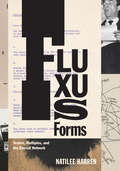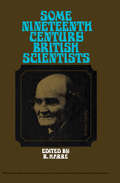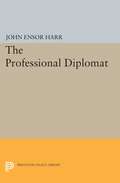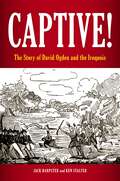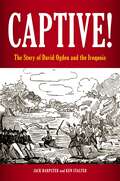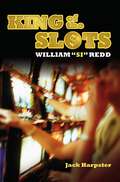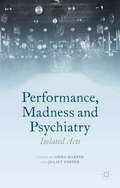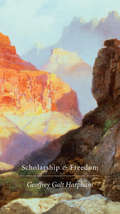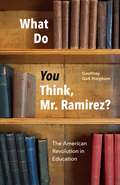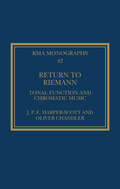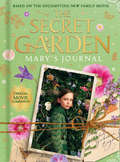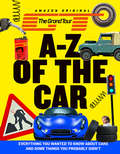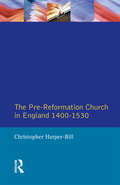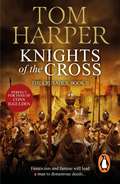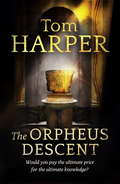- Table View
- List View
Fluxus Forms: Scores, Multiples, and the Eternal Network
by Natilee Harren“PURGE the world of dead art, imitation, artificial art. . . . Promote living art, anti-art, promote NON ART REALITY to be grasped by all peoples,” writes artist George Maciunas in his Fluxus manifesto of 1963. Reacting against an elitist art world enthralled by modernist aesthetics, Fluxus encouraged playfulness, chance, irreverence, and viewer participation. The diverse collective—including George Brecht, Robert Filliou, Dick Higgins, Alison Knowles, George Maciunas, Yoko Ono, Nam June Paik, Benjamin Patterson, Takako Saito, Mieko Shiomi, Ben Vautier, and Robert Watts—embraced humble objects and everyday gestures as critical means of finding freedom and excitement beyond traditional forms of art-making. While today the Fluxus collective is recognized for its radical neo-avant-garde works of performance, publishing, and relational art and its experimental, interdisciplinary approach, it was not taken seriously in its own time. With Fluxus Forms, Natilee Harren captures the magnetic energy of Fluxus activities and collaborations that emerged at the intersections of art, music, performance, and literature. The book offers insight into the nature of art in the 1960s as it traces the international development of the collective’s unique intermedia works—including event scores and Fluxbox multiples—that irreversibly expanded the boundaries of contemporary art.
Fluxus Forms: Scores, Multiples, and the Eternal Network
by Natilee Harren“PURGE the world of dead art, imitation, artificial art. . . . Promote living art, anti-art, promote NON ART REALITY to be grasped by all peoples,” writes artist George Maciunas in his Fluxus manifesto of 1963. Reacting against an elitist art world enthralled by modernist aesthetics, Fluxus encouraged playfulness, chance, irreverence, and viewer participation. The diverse collective—including George Brecht, Robert Filliou, Dick Higgins, Alison Knowles, George Maciunas, Yoko Ono, Nam June Paik, Benjamin Patterson, Takako Saito, Mieko Shiomi, Ben Vautier, and Robert Watts—embraced humble objects and everyday gestures as critical means of finding freedom and excitement beyond traditional forms of art-making. While today the Fluxus collective is recognized for its radical neo-avant-garde works of performance, publishing, and relational art and its experimental, interdisciplinary approach, it was not taken seriously in its own time. With Fluxus Forms, Natilee Harren captures the magnetic energy of Fluxus activities and collaborations that emerged at the intersections of art, music, performance, and literature. The book offers insight into the nature of art in the 1960s as it traces the international development of the collective’s unique intermedia works—including event scores and Fluxbox multiples—that irreversibly expanded the boundaries of contemporary art.
Fluxus Forms: Scores, Multiples, and the Eternal Network
by Natilee Harren“PURGE the world of dead art, imitation, artificial art. . . . Promote living art, anti-art, promote NON ART REALITY to be grasped by all peoples,” writes artist George Maciunas in his Fluxus manifesto of 1963. Reacting against an elitist art world enthralled by modernist aesthetics, Fluxus encouraged playfulness, chance, irreverence, and viewer participation. The diverse collective—including George Brecht, Robert Filliou, Dick Higgins, Alison Knowles, George Maciunas, Yoko Ono, Nam June Paik, Benjamin Patterson, Takako Saito, Mieko Shiomi, Ben Vautier, and Robert Watts—embraced humble objects and everyday gestures as critical means of finding freedom and excitement beyond traditional forms of art-making. While today the Fluxus collective is recognized for its radical neo-avant-garde works of performance, publishing, and relational art and its experimental, interdisciplinary approach, it was not taken seriously in its own time. With Fluxus Forms, Natilee Harren captures the magnetic energy of Fluxus activities and collaborations that emerged at the intersections of art, music, performance, and literature. The book offers insight into the nature of art in the 1960s as it traces the international development of the collective’s unique intermedia works—including event scores and Fluxbox multiples—that irreversibly expanded the boundaries of contemporary art.
Fluxus Forms: Scores, Multiples, and the Eternal Network
by Natilee Harren“PURGE the world of dead art, imitation, artificial art. . . . Promote living art, anti-art, promote NON ART REALITY to be grasped by all peoples,” writes artist George Maciunas in his Fluxus manifesto of 1963. Reacting against an elitist art world enthralled by modernist aesthetics, Fluxus encouraged playfulness, chance, irreverence, and viewer participation. The diverse collective—including George Brecht, Robert Filliou, Dick Higgins, Alison Knowles, George Maciunas, Yoko Ono, Nam June Paik, Benjamin Patterson, Takako Saito, Mieko Shiomi, Ben Vautier, and Robert Watts—embraced humble objects and everyday gestures as critical means of finding freedom and excitement beyond traditional forms of art-making. While today the Fluxus collective is recognized for its radical neo-avant-garde works of performance, publishing, and relational art and its experimental, interdisciplinary approach, it was not taken seriously in its own time. With Fluxus Forms, Natilee Harren captures the magnetic energy of Fluxus activities and collaborations that emerged at the intersections of art, music, performance, and literature. The book offers insight into the nature of art in the 1960s as it traces the international development of the collective’s unique intermedia works—including event scores and Fluxbox multiples—that irreversibly expanded the boundaries of contemporary art.
Some Nineteenth Century British Scientists: The Commonwealth and International Library: Science and Society
by R. HarréSome Nineteenth Century British Scientists presents the biographies of eight British scientists who represent the state of science in the second half of the Victorian era: Charles Wyville Thomson, James Murray, Arthur Cayley, Francis Galton, William Thomson, Lord Kelvin, Norman Lockyer, Sidney Gilchrist Thomas, and William Ramsay. This book is comprised of seven chapters and begins by focusing on the contributions and achievements of Charles Wyville Thomson in the fields of natural history, marine biology, and deep-sea exploration, especially his expedition aboard H.M.S. Challenger, and of James Murray in oceanography. Subsequent chapters discuss the works of Arthur Cayley (mathematics), Francis Galton (exploration, anthropology, and eugenics), and William Thomson, Lord Kelvin (mathematical physics). The achievements of Norman Lockyer (astrophysics), Sidney Gilchrist Thomas (inventor of the Thomas-Gilchrist process for eliminating phosphorus in the Bessemer converter), and William Ramsay (chemistry) are also considered. This monograph will be a useful resource for students and scientists alike.
The Professional Diplomat
by John Ensor HarrThe role of the Foreign Service Officer of the United States altered radically during and after World War II. John Harr, who served as a staff member of the Commission on Foreign Affairs Personnel in 1962 and as Director of the Office of Management Planning in the State Department for four years, describes the changes and the response of the Foreign Service Corps to them. He provides a direct approach to the understanding of the professional diplomat and of the pervasive force of professionalism in modern American society. He also outlines managerial strategy to meet the growth challenge of the future.Originally published in 1969.The Princeton Legacy Library uses the latest print-on-demand technology to again make available previously out-of-print books from the distinguished backlist of Princeton University Press. These editions preserve the original texts of these important books while presenting them in durable paperback and hardcover editions. The goal of the Princeton Legacy Library is to vastly increase access to the rich scholarly heritage found in the thousands of books published by Princeton University Press since its founding in 1905.
Captive!: The Story of David Ogden and the Iroquois
by Jack Harpster Ken Stalter M.D.This book recounts the amazing life story of a 16-year-old American Revolutionary-era soldier, including his captivity, adoption, and eventual flight to freedom from the Iroquois Six-Nation Indian tribes. The story is retold with historical accuracy and an even-handed treatment of the conflicting interests of the loyalists, Iroquois, and Patriots.David Ogden was born into an unusually tumultuous time in America—the colonials were struggling to throw off the yoke of British rule while also battling the Iroquois tribes for control of their ancestral lands. The bibliography of anyone who survived a life in the late 1700s frontier days of New York would be a great tale, but David Ogden's story stands alone, even within historical context of his times.Captive! The Story of David Ogden and the Iroquois is a compelling true adventure story of one young colonial soldier's bravery, choosing a daunting 126-mile race to freedom fraught with the risk of death over being assimilated into an alien society. This story is told with all the factual historical information that was missing from all the original captivity narratives, but accurately retains the flavor of the period and the voice of the 18th-century protagonist.
Captive!: The Story of David Ogden and the Iroquois
by Jack Harpster Ken Stalter M.D.This book recounts the amazing life story of a 16-year-old American Revolutionary-era soldier, including his captivity, adoption, and eventual flight to freedom from the Iroquois Six-Nation Indian tribes. The story is retold with historical accuracy and an even-handed treatment of the conflicting interests of the loyalists, Iroquois, and Patriots.David Ogden was born into an unusually tumultuous time in America—the colonials were struggling to throw off the yoke of British rule while also battling the Iroquois tribes for control of their ancestral lands. The bibliography of anyone who survived a life in the late 1700s frontier days of New York would be a great tale, but David Ogden's story stands alone, even within historical context of his times.Captive! The Story of David Ogden and the Iroquois is a compelling true adventure story of one young colonial soldier's bravery, choosing a daunting 126-mile race to freedom fraught with the risk of death over being assimilated into an alien society. This story is told with all the factual historical information that was missing from all the original captivity narratives, but accurately retains the flavor of the period and the voice of the 18th-century protagonist.
King of the Slots: William "Si" Redd
by Jack HarpsterThis book offers the first full-length biography of the man often described as one of the most influential and innovative people in the gaming industry over the past 50 years.King of the Slots: William "Si" Redd relates the fascinating, only-in-America success story of one man's improbable rise from the depths of poverty to the heights of international commerce and dazzling wealth. William Silas "Si" Redd is recognized as one of the most important and influential persons in the gaming industry over the past half century. The company he founded, International Game Technology (IGT), is the world leader in the manufacture of gaming equipment and gaming software features. His video poker is the most popular slot machine since the original debuted in 1899. King of the Slots covers the life (1911-2003) and rags-to-riches story of the man who changed the face of the casino gaming industry. Both a business book and a biography, it introduces readers to the nation's leading gaming centers, Apollo-era technology and how it changed gambling, and the race to perfect the first video poker game. It also gives them a chance to meet the characters with whom Redd rubbed shoulders, including Howard Hughes, Mafia capo Raymond Patriarca, Arizona cowboy and pig farmer Jimmie Hughes, gaming legend Bill Harrah, and casino visionary Jay Sarno.
Performance, Madness and Psychiatry: Isolated Acts (Palgrave Politics of Identity and Citizenship Series)
by Anna Harpin Juliet FosterThis exciting collection of essays explores the complex area of madness and performance. The book spans from the 18th century to the present and unearths the overlooked history of theatre and performance in, and about, psychiatric asylums and hospitals. The book will appeal to historians, social scientists, theatre scholars, and artists alike.
Scholarship and Freedom
by Geoffrey Galt HarphamA powerful and original argument that the practice of scholarship is grounded in the concept of radical freedom, beginning with the freedoms of inquiry, thought, and expression. Why are scholars and scholarship invariably distrusted and attacked by authoritarian regimes? Geoffrey Galt Harpham argues that at its core, scholarship is informed by an emancipatory agenda based on a permanent openness to the new, an unlimited responsiveness to evidence, and a commitment to conversion. At the same time, however, scholarship involves its own forms of authority. As a worldly practice, it is a struggle for dominance without end as scholars try to disprove the claims of others, establish new versions of the truth, and seek disciples. Scholarship and Freedom threads its general arguments through examinations of the careers of three scholars: W. E. B. Du Bois, who serves as an example of scholarly character formation; South African Bernard Lategan, whose New Testament studies became entangled on both sides of his country’s battles over apartheid; and Linda Nochlin, whose essay “Why Have There Been No Great Women Artists?” virtually created the field of feminist art history.
What Do You Think, Mr. Ramirez?: The American Revolution in Education
by Geoffrey Galt HarphamGeoffrey Galt Harpham’s book takes its title from a telling anecdote. A few years ago Harpham met a Cuban immigrant on a college campus, who told of arriving, penniless and undocumented, in the 1960s and eventually earning a GED and making his way to a community college. In a literature course one day, the professor asked him, “Mr. Ramirez, what do you think?” The question, said Ramirez, changed his life because “it was the first time anyone had asked me that.” Realizing that his opinion had value set him on a course that led to his becoming a distinguished professor. That, says Harpham, was the midcentury promise of American education, the deep current of commitment and aspiration that undergirded the educational system that was built in the postwar years, and is under extended assault today. The United States was founded, he argues, on the idea that interpreting its foundational documents was the highest calling of opinion, and for a brief moment at midcentury, the country turned to English teachers as the people best positioned to train students to thrive as interpreters—which is to say as citizens of a democracy. Tracing the roots of that belief in the humanities through American history, Harpham builds a strong case that, even in very different contemporary circumstances, the emphasis on social and cultural knowledge that animated the midcentury university is a resource that we can, and should, draw on today.
What Do You Think, Mr. Ramirez?: The American Revolution in Education
by Geoffrey Galt HarphamGeoffrey Galt Harpham’s book takes its title from a telling anecdote. A few years ago Harpham met a Cuban immigrant on a college campus, who told of arriving, penniless and undocumented, in the 1960s and eventually earning a GED and making his way to a community college. In a literature course one day, the professor asked him, “Mr. Ramirez, what do you think?” The question, said Ramirez, changed his life because “it was the first time anyone had asked me that.” Realizing that his opinion had value set him on a course that led to his becoming a distinguished professor. That, says Harpham, was the midcentury promise of American education, the deep current of commitment and aspiration that undergirded the educational system that was built in the postwar years, and is under extended assault today. The United States was founded, he argues, on the idea that interpreting its foundational documents was the highest calling of opinion, and for a brief moment at midcentury, the country turned to English teachers as the people best positioned to train students to thrive as interpreters—which is to say as citizens of a democracy. Tracing the roots of that belief in the humanities through American history, Harpham builds a strong case that, even in very different contemporary circumstances, the emphasis on social and cultural knowledge that animated the midcentury university is a resource that we can, and should, draw on today.
What Do You Think, Mr. Ramirez?: The American Revolution in Education
by Geoffrey Galt HarphamGeoffrey Galt Harpham’s book takes its title from a telling anecdote. A few years ago Harpham met a Cuban immigrant on a college campus, who told of arriving, penniless and undocumented, in the 1960s and eventually earning a GED and making his way to a community college. In a literature course one day, the professor asked him, “Mr. Ramirez, what do you think?” The question, said Ramirez, changed his life because “it was the first time anyone had asked me that.” Realizing that his opinion had value set him on a course that led to his becoming a distinguished professor. That, says Harpham, was the midcentury promise of American education, the deep current of commitment and aspiration that undergirded the educational system that was built in the postwar years, and is under extended assault today. The United States was founded, he argues, on the idea that interpreting its foundational documents was the highest calling of opinion, and for a brief moment at midcentury, the country turned to English teachers as the people best positioned to train students to thrive as interpreters—which is to say as citizens of a democracy. Tracing the roots of that belief in the humanities through American history, Harpham builds a strong case that, even in very different contemporary circumstances, the emphasis on social and cultural knowledge that animated the midcentury university is a resource that we can, and should, draw on today.
What Do You Think, Mr. Ramirez?: The American Revolution in Education
by Geoffrey Galt HarphamGeoffrey Galt Harpham’s book takes its title from a telling anecdote. A few years ago Harpham met a Cuban immigrant on a college campus, who told of arriving, penniless and undocumented, in the 1960s and eventually earning a GED and making his way to a community college. In a literature course one day, the professor asked him, “Mr. Ramirez, what do you think?” The question, said Ramirez, changed his life because “it was the first time anyone had asked me that.” Realizing that his opinion had value set him on a course that led to his becoming a distinguished professor. That, says Harpham, was the midcentury promise of American education, the deep current of commitment and aspiration that undergirded the educational system that was built in the postwar years, and is under extended assault today. The United States was founded, he argues, on the idea that interpreting its foundational documents was the highest calling of opinion, and for a brief moment at midcentury, the country turned to English teachers as the people best positioned to train students to thrive as interpreters—which is to say as citizens of a democracy. Tracing the roots of that belief in the humanities through American history, Harpham builds a strong case that, even in very different contemporary circumstances, the emphasis on social and cultural knowledge that animated the midcentury university is a resource that we can, and should, draw on today.
What Do You Think, Mr. Ramirez?: The American Revolution in Education
by Geoffrey Galt HarphamGeoffrey Galt Harpham’s book takes its title from a telling anecdote. A few years ago Harpham met a Cuban immigrant on a college campus, who told of arriving, penniless and undocumented, in the 1960s and eventually earning a GED and making his way to a community college. In a literature course one day, the professor asked him, “Mr. Ramirez, what do you think?” The question, said Ramirez, changed his life because “it was the first time anyone had asked me that.” Realizing that his opinion had value set him on a course that led to his becoming a distinguished professor. That, says Harpham, was the midcentury promise of American education, the deep current of commitment and aspiration that undergirded the educational system that was built in the postwar years, and is under extended assault today. The United States was founded, he argues, on the idea that interpreting its foundational documents was the highest calling of opinion, and for a brief moment at midcentury, the country turned to English teachers as the people best positioned to train students to thrive as interpreters—which is to say as citizens of a democracy. Tracing the roots of that belief in the humanities through American history, Harpham builds a strong case that, even in very different contemporary circumstances, the emphasis on social and cultural knowledge that animated the midcentury university is a resource that we can, and should, draw on today.
What Do You Think, Mr. Ramirez?: The American Revolution in Education
by Geoffrey Galt HarphamGeoffrey Galt Harpham’s book takes its title from a telling anecdote. A few years ago Harpham met a Cuban immigrant on a college campus, who told of arriving, penniless and undocumented, in the 1960s and eventually earning a GED and making his way to a community college. In a literature course one day, the professor asked him, “Mr. Ramirez, what do you think?” The question, said Ramirez, changed his life because “it was the first time anyone had asked me that.” Realizing that his opinion had value set him on a course that led to his becoming a distinguished professor. That, says Harpham, was the midcentury promise of American education, the deep current of commitment and aspiration that undergirded the educational system that was built in the postwar years, and is under extended assault today. The United States was founded, he argues, on the idea that interpreting its foundational documents was the highest calling of opinion, and for a brief moment at midcentury, the country turned to English teachers as the people best positioned to train students to thrive as interpreters—which is to say as citizens of a democracy. Tracing the roots of that belief in the humanities through American history, Harpham builds a strong case that, even in very different contemporary circumstances, the emphasis on social and cultural knowledge that animated the midcentury university is a resource that we can, and should, draw on today.
Return to Riemann: Tonal Function and Chromatic Music (ISSN)
by J. P. Harper-Scott Oliver ChandlerThis book is a music-theoretical and critical-theoretical study of late tonal music, and, in particular, of the music of Wagner’s Götterdämmerung.First, in terms of music theory, it proposes a new theory of tonal function that returns to the theories of Hugo Riemann to rediscover a development of his thought that has been covered over by the recent project of neo-Riemannian theory. Second, in terms of its philosophical approach, it reawakens the critical-theoretical examination of the relation between music and the late capitalist society that is sedimented in the musical materials themselves, and which the music, in turn, subjects to aesthetically embodied critique. The music, the theory, and the listeners and critics who respond to them are all radically reimagined.This book will be of interest to professional music theorists, undergraduates, and technically inclined musicians and listeners, that is, anyone who is fascinated by the chromatic magic of late-nineteenth-century music.
Return to Riemann: Tonal Function and Chromatic Music (ISSN)
by J. P. Harper-Scott Oliver ChandlerThis book is a music-theoretical and critical-theoretical study of late tonal music, and, in particular, of the music of Wagner’s Götterdämmerung.First, in terms of music theory, it proposes a new theory of tonal function that returns to the theories of Hugo Riemann to rediscover a development of his thought that has been covered over by the recent project of neo-Riemannian theory. Second, in terms of its philosophical approach, it reawakens the critical-theoretical examination of the relation between music and the late capitalist society that is sedimented in the musical materials themselves, and which the music, in turn, subjects to aesthetically embodied critique. The music, the theory, and the listeners and critics who respond to them are all radically reimagined.This book will be of interest to professional music theorists, undergraduates, and technically inclined musicians and listeners, that is, anyone who is fascinated by the chromatic magic of late-nineteenth-century music.
The Secret Garden: Mary’s Journal
by HarperCollinsChildren’sBooksA beautifully illustrated journal of ten-year-old Mary Lennox based on the enchanting new family movie, The Secret Garden, launching globally in Spring 2020. The perfect gift for all fans of The Secret Garden!
The Grand Tour A-Z of the Car: Everything You Wanted To Know About Cars And Some Things You Probably Didn't
by HarperCollinsDid you know there are over 47,000 facts in the world?* And the good news is, many of them are in this book. That’s right, The Grand Tour A-Z of the Car is the only reference guide you need for cars, driving and all related matters, especially if you’re not too fussed about those facts being accurate.
The Pre-Reformation Church in England 1400-1530
by Christopher Harper-BillOffers a concise synthesis of the valuable research accomplished in recent years which has transformed our view of religious belief and practice in pre-Reformation England. The author argues that the church was neither in a state of crisis, nor were its members clamouring for change, let alone `reformation' during the early years of Henry VIII's reign.
The Pre-Reformation Church in England 1400-1530
by Christopher Harper-BillOffers a concise synthesis of the valuable research accomplished in recent years which has transformed our view of religious belief and practice in pre-Reformation England. The author argues that the church was neither in a state of crisis, nor were its members clamouring for change, let alone `reformation' during the early years of Henry VIII's reign.
Knights Of The Cross: the extraordinary story of the First Crusade - gripping from the first page
by Tom Harper1098. The armies of the First Crusade race across Asia minor, routing the Turks and reclaiming the land for Christendom. But on the Syrian border, their advance is halted before the impregnable walls of Antioch.As winter draws on, they are forced to suffer a fruitless, interminable siege, gnawed by famine and tormented by the Turkish defenders. The entire crusade is on the verge of collapse. His lord, the ruthlessly ambitious Bohemond charges Demetrios Askiates to find the killer. But as Demetrios investigates, the trail seems to lead ever deeper into the vipers' nest of jealousy, betrayal and fanaticism which lies at the heart of the crusade.
The Orpheus Descent: A Novel
by Tom HarperI have never written down the answers to the deepest mysteries, nor will I ever... The philosopher Plato wrote these words more than two thousand years ago, following a perilous voyage to Italy -- an experience about which he never spoke again, but from which he emerged the greatest thinker in all of human history.Today, twelve golden tablets sit in museums around the world, each created by unknown hands and buried in ancient times, and each providing the dead with the route to the afterlife. Archaeologist Lily Barnes, working on a dig in southern Italy, has just found another. But this tablet names the location to the mouth of hell itself.And then Lily vanishes. Has she walked out on her job, her marriage, and her life -- or has something more sinister happened? Her husband, Jonah, is desperate to find her. But no one can help him: not the police, and not the secretive foundation that sponsored her dig. All Jonah has is belief, and a determination to do whatever it takes to get Lily back.But like Plato before him, Jonah will discover the journey ahead is mysterious and dark and fraught with danger. And not everyone who travels to the hidden place where Lily has gone can return.
